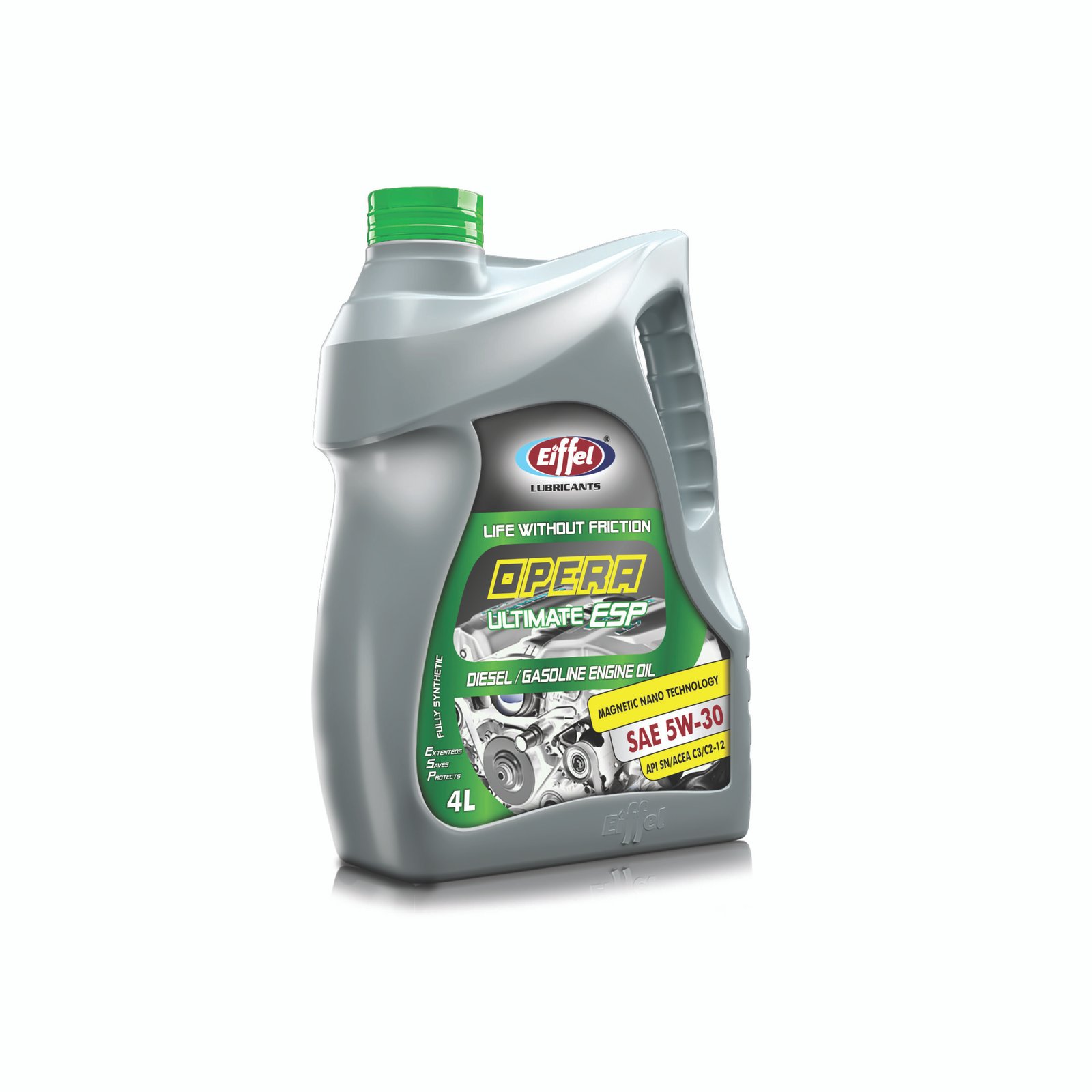


EIFFEL OPERA ULTIMATE ESP SN series is suitable for use in following:
Specifications Eiffel Opera Ultimate ESP 5W30 SN meets or exceeds the following International and Builder specifications:
Typical Characteristics
| Eiffel Opera Ultimate ESP | Test Method | Units | 5W-30 |
| Density @ 15 0C | ASTM D 4052 | gm/cc | 0.845 |
| Viscosity @ 100 0C | ASTM D 445 | cSt | 12.0 |
| Viscosity @ 40 0C | ASTM D 445 | cSt | 69.55 |
| Viscosity Index | ASTM D 2270 | – | 171 |
| Pour Point | ASTM D 97 | °C | -42 |
| Flash Point (COC) | ASTM D 92 | °C | 230 |
| Total Base Number | ASTM D 2896 | mg KOH/g | 7.8 |
| Phosphorous | ASTM D 4951 | % wt | 0.075 |
| CCS Viscosity | ASTM D 5293 | cP | 6050 @ -30 °C |
The above figures are typical of blends with normal production tolerance and do not constitute a specification.